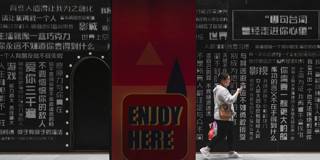With China teetering on the edge of a deflationary trap, the question of how to avoid a Japanese-style "lost three decades" has become urgent. While China’s government is on the right track with its recently announced stimulus package, more is needed to break the cycle of declining spending and falling prices.
BEIJING/LONDON – About two years ago, in the aftermath of the COVID-19 pandemic, China’s economy hit a roadblock. As all sectors underwent deleveraging, economic growth slowed, household savings rates increased, and businesses scaled back their investments and accumulated savings. Many now wonder whether consumers and companies are stuck in a self-reinforcing cycle of declining spending and falling prices, which would have the pernicious effect of increasing the real value of debt.

BEIJING/LONDON – About two years ago, in the aftermath of the COVID-19 pandemic, China’s economy hit a roadblock. As all sectors underwent deleveraging, economic growth slowed, household savings rates increased, and businesses scaled back their investments and accumulated savings. Many now wonder whether consumers and companies are stuck in a self-reinforcing cycle of declining spending and falling prices, which would have the pernicious effect of increasing the real value of debt.